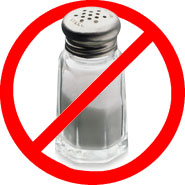Post by bulan on Feb 3, 2019 12:59:40 GMT
Food dye allergies are pretty rare. Overall, experts believe that only a small number of people are affected by food dyes.
Carmine, also referred to as cochineal extract or natural red 4, comes from dried bugs. It has been used in food since the 16th century. It is also found in cosmetics. A variety of reactions have been noted including facial swelling, rashes, and wheezing. It’s also suspected to have a role in cases of anaphylactic shock where a cause isn’t easily identified.
FD&C yellow #5, also referred to as tartrazine, is one of two yellow food dyes that has been associated with allergic reactions. People have reported hives and swelling after eating foods containing FD&C yellow #5. Studies many years ago also suggested tartrazine might trigger asthma attacks in children, although recent research hasn’t found the same evidence.
The other yellow dye, annatto, comes from the seeds of the achiote tree, which is found in tropical countries. Annatto gives foods a yellow-orange color. There are cases of mild skin reactions from annatto. Some studies have reported cases of severe, anaphylactic reactions in people who were sensitive to this dye.
The symptoms of a food dye reaction can be mild or severe. During a mild reaction, you might notice:
flushing
headaches
hives
itchy skin
A severe reaction may include:
swelling of the face or lips
tightness in the chest
difficulty breathing, or wheezing
dizziness or fainting
fast heartbeat
low blood pressure
tightness in your throat
trouble breathing
If you develop severe symptoms, call your emergency number immediately. This reaction can be life-threatening.

Carmine, also referred to as cochineal extract or natural red 4, comes from dried bugs. It has been used in food since the 16th century. It is also found in cosmetics. A variety of reactions have been noted including facial swelling, rashes, and wheezing. It’s also suspected to have a role in cases of anaphylactic shock where a cause isn’t easily identified.
FD&C yellow #5, also referred to as tartrazine, is one of two yellow food dyes that has been associated with allergic reactions. People have reported hives and swelling after eating foods containing FD&C yellow #5. Studies many years ago also suggested tartrazine might trigger asthma attacks in children, although recent research hasn’t found the same evidence.
The other yellow dye, annatto, comes from the seeds of the achiote tree, which is found in tropical countries. Annatto gives foods a yellow-orange color. There are cases of mild skin reactions from annatto. Some studies have reported cases of severe, anaphylactic reactions in people who were sensitive to this dye.
The symptoms of a food dye reaction can be mild or severe. During a mild reaction, you might notice:
flushing
headaches
hives
itchy skin
A severe reaction may include:
swelling of the face or lips
tightness in the chest
difficulty breathing, or wheezing
dizziness or fainting
fast heartbeat
low blood pressure
tightness in your throat
trouble breathing
If you develop severe symptoms, call your emergency number immediately. This reaction can be life-threatening.







